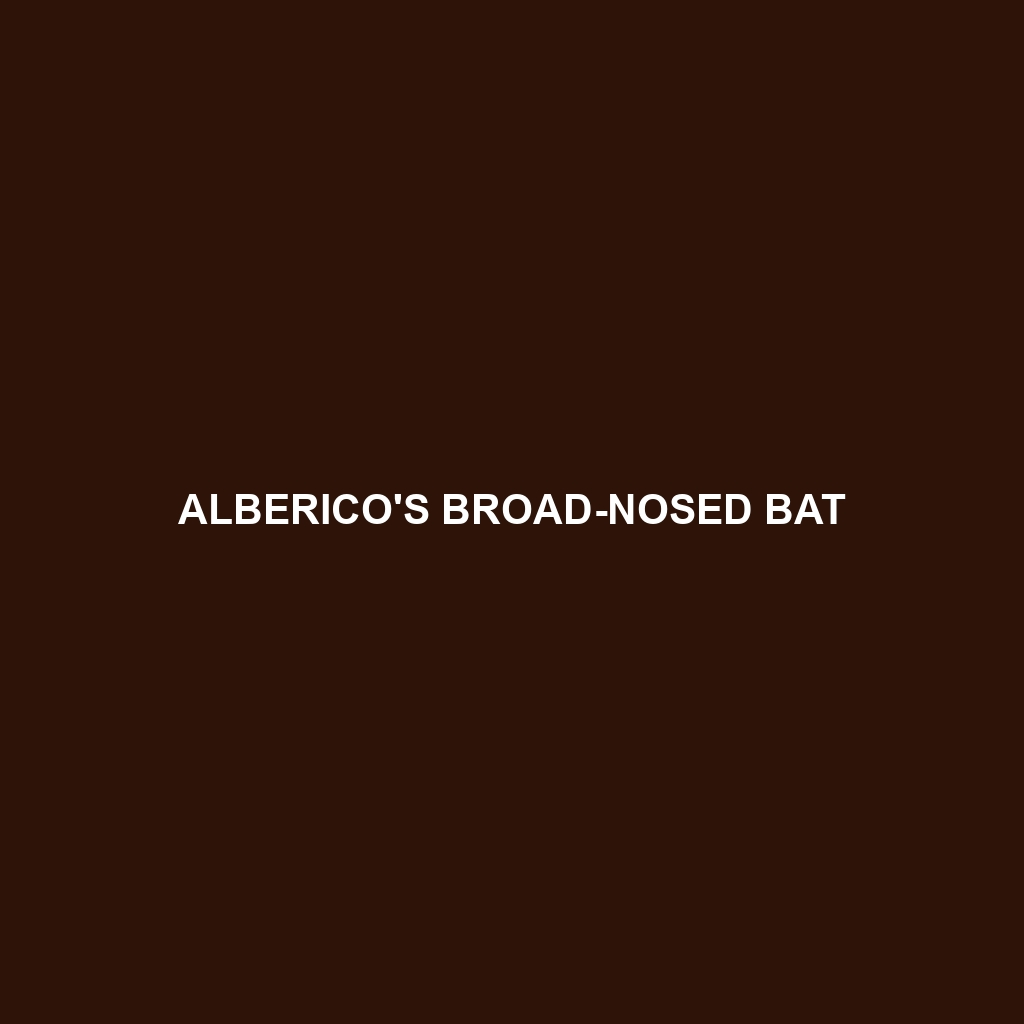Cuban Fig-eating Bat
Common Name: Cuban Fig-eating Bat
Scientific Name: Phyllonycteris poeyi
Habitat: The Cuban Fig-eating Bat primarily inhabits the various tropical forests of Cuba, including humid subtropical regions and coastal mangroves. This species thrives in the rich ecological landscapes of the island, often found roosting in caves, tree hollows, or even in urban areas where ample food sources are available. Its distribution is closely linked to areas abundant in fig trees, which are essential for its survival.
Physical Characteristics: The Cuban Fig-eating Bat is a medium-sized bat, typically measuring about 8 to 10 centimeters in body length with a wingspan that extends to approximately 30 centimeters. Its fur is soft and dense, usually exhibiting a brownish-gray coloration with lighter underparts. Distinctive features include large ears and a flattened snout, adapted for its fig-dominant diet. These physical traits enable it to navigate effectively through dense foliage in its natural habitat.
Behavior: Known for its nocturnal habits, the Cuban Fig-eating Bat engages in foraging at dusk and dawn, which are peak periods for activity. This species exhibits social behavior, often roosting in groups, and is known for its characteristic flight patterns that can be described as agile and quick, allowing for efficient feeding. Its unique approach to hunting often involves locating ripe figs, highlighting its specialized feeding strategies.
Diet: The Cuban Fig-eating Bat primarily feeds on figs, specifically those from various species of the Ficus genus. This bat is equipped with specialized teeth that enable it to puncture fig skins, accessing the sweet pulp inside. Its diet not only consists of figs but may also include nectar and fruits, reinforcing its role as a frugivore in the ecosystem. The bat plays a significant role in seed dispersal, which benefits the growth of fig trees.
Reproduction: Breeding in Cuban Fig-eating Bats typically occurs during the warmer months, with a gestation period of about 2 to 3 months. Females usually give birth to a single pup, which is nursed until it can forage independently. Notably, these bats show protective behavior towards their young, often clustering in tight groups to keep them safe during roosting.
Conservation Status: The Cuban Fig-eating Bat is currently listed as **Vulnerable** according to the IUCN Red List. Threats to its survival include habitat destruction due to deforestation and urbanization, as well as competition for food sources with non-native species. Conservation efforts are essential to ensure the preservation of its natural habitats and breeding grounds.
Interesting Facts: One fascinating aspect of the Cuban Fig-eating Bat is its role in the reproductive cycle of fig trees. As it feeds on figs, it not only sustains itself but also aids in fertilizing the trees it feeds upon, creating a mutualistic relationship. Additionally, this species is known for its impressive flying skills, which allow it to navigate through complex forest environments effortlessly.
Role in Ecosystem: The Cuban Fig-eating Bat plays a vital role in its ecosystem as a seed disperser and pollinator. By feeding on figs and other fruits, it facilitates plant reproduction and contributes to the diversity of tropical forest flora. Its interactions with fig trees and other species highlight its importance in maintaining ecological balance within its habitat.
